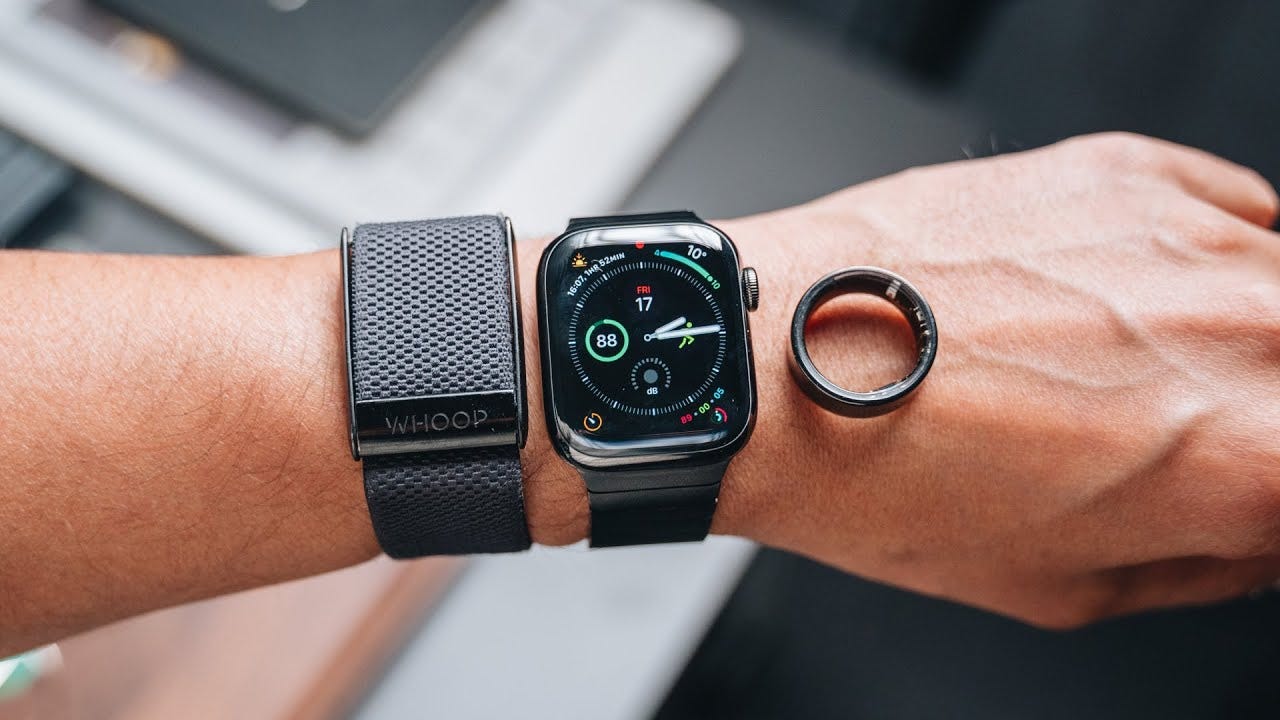Is Whoop actually worth the hype?
Whoop is becoming a must for health tech enthusiasts but, is it worth the hype?
Hey there!
The other day, I came across this online discussion that I thought was super valuable. It revolved around the question of whether the Whoop fitness tracker is really worth the hype, especially compared to devices like the Apple Watch.
Many users weighed in on their experiences, comparing features, usage, and overall value. I found some incredibly interesting insights that could help you decide if Whoop is right for you.
Let me share the 5 most important insights I found:
1. Whoop offers unique insights into recovery.
2. If you already own an Apple Watch, it may not be worth it.
3. Whoop’s design and battery life make it easier to wear at night.
4. User experiences highlight the importance of proper use.
5. The value of subscription services can vary greatly.
1. Whoop offers unique insights into recovery:
One of the standout features of Whoop is its focus on recovery. Unlike many fitness trackers that primarily monitor activity, Whoop emphasizes tracking your sleep and recovery patterns. This can be a game-changer for anyone looking to optimize their performance. For example, if you’re an athlete or someone who trains regularly, understanding how your sleep quality affects your recovery can help you adjust your routines.
Experts suggest that by analyzing your sleep cycles, Whoop can indicate whether you're ready for a hard workout or if you should take it easy. Users have reported significant improvements in performance after adjusting training schedules based on recovery data. So, if you’re someone who often feels fatigued, this could be a valuable tool for enhancing your overall well-being.
2. If you already own an Apple Watch, it may not be worth it:
Many users pointed out that if you already have an Apple Watch, adding Whoop to the mix might not be necessary. The Apple Watch is known for its superior heart rate monitoring and extensive health tracking features, which can often be accessed through various apps.
For instance, if you're using your Apple Watch primarily for gym workouts, it might be more efficient to explore apps that can enhance your experience rather than investing in another subscription. A common approach is to utilize the existing capabilities of your Apple Watch to track your workouts and health metrics, which could save you a significant amount of money over time.
3. Whoop’s design and battery life make it easier to wear at night:
One of the reasons some people opt for Whoop over bulkier devices like the Apple Watch is its slim design. The Whoop tracker is lightweight and comfortable enough to wear while sleeping, which encourages users to monitor their sleep patterns more accurately.
Moreover, Whoop boasts an impressive battery life of 10-14 days, which means you won’t have to charge it every night, unlike the Apple Watch. This can be particularly appealing for those who struggle to remember to charge their devices or prefer not to wear a watch during the day. someone shared that they found Whoop to be a better fit for their lifestyle, as they could wear it consistently without the hassle of daily charging.
4. User experiences highlight the importance of proper use:
A recurring theme in the discussions was that Whoop can be an amazing tool when used correctly. Several users emphasized that it’s not just about the device itself but how you engage with its features. For example, using Whoop to track your workouts, sleep, and recovery can provide a comprehensive view of your health.
To maximize its effectiveness, take time to familiarize yourself with the app and its insights. Create a routine where you log your workouts and recovery data, and pay attention to how your body responds. Remember that the tool is only as good as the data you input; being proactive in using it will lead to more meaningful results.
5. The value of subscription services can vary greatly:
While Whoop’s subscription model is often a point of contention, it can offer long-term benefits if you’re committed to tracking your fitness journey. The subscription includes access to advanced analytics and insights, which can be beneficial for those serious about improving their performance.
However, it’s essential to weigh the cost against the value you expect to get. For example, if you’re someone who doesn’t use the data regularly or isn’t fully invested in tracking recovery, the subscription may not justify the expense. Consider your fitness goals and how much you would actually utilize the features before making a decision.
In short: Whoop can be a powerful tool for tracking recovery and sleep, but its value largely depends on your existing devices and how you intend to use it.
Let me know what you think about it!










Thanks for creating and sharing how Memorable works. Great work. How about including source links and any links mentioned in the thread for more credibility and research support? And I presume you added in the images afterwards. It does looks very simple to use!